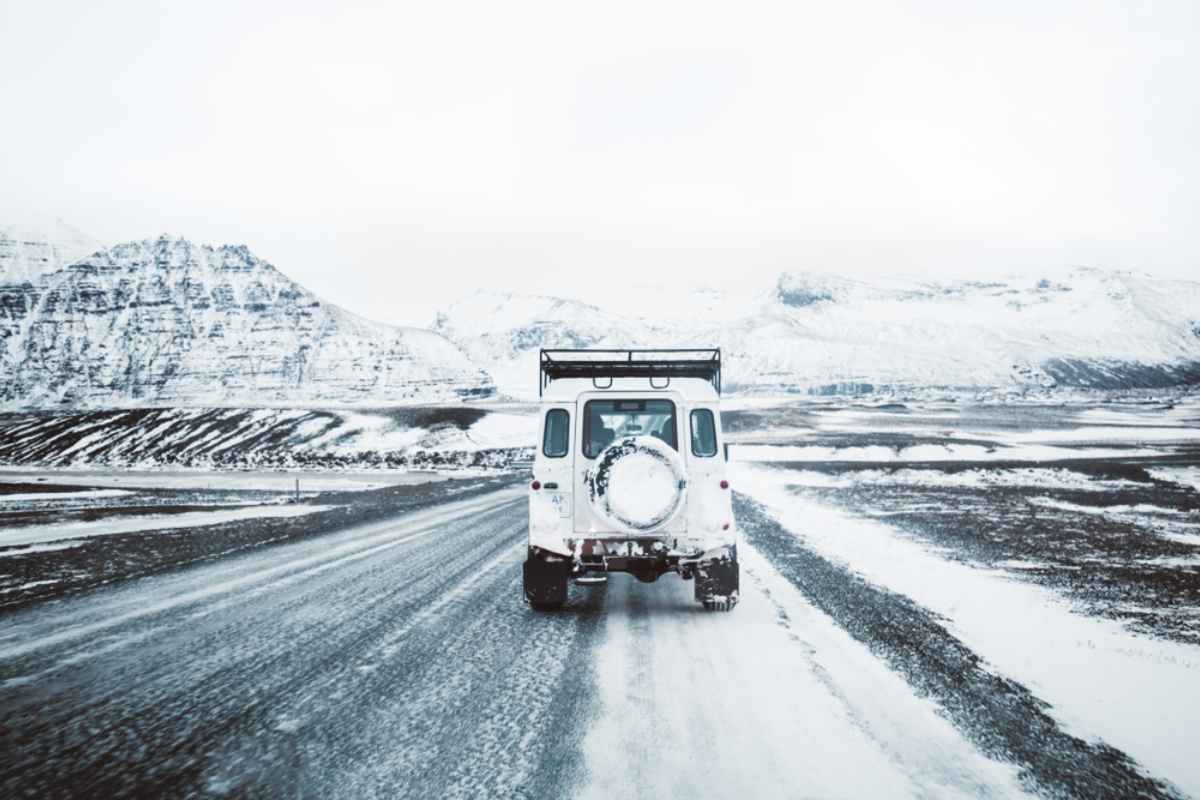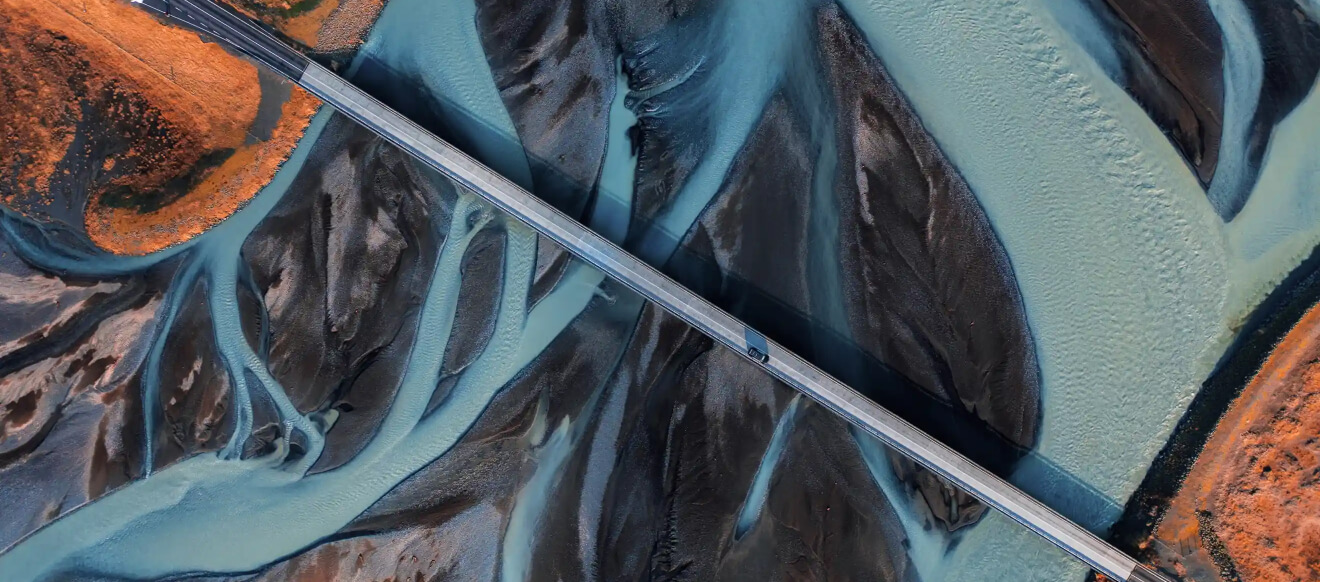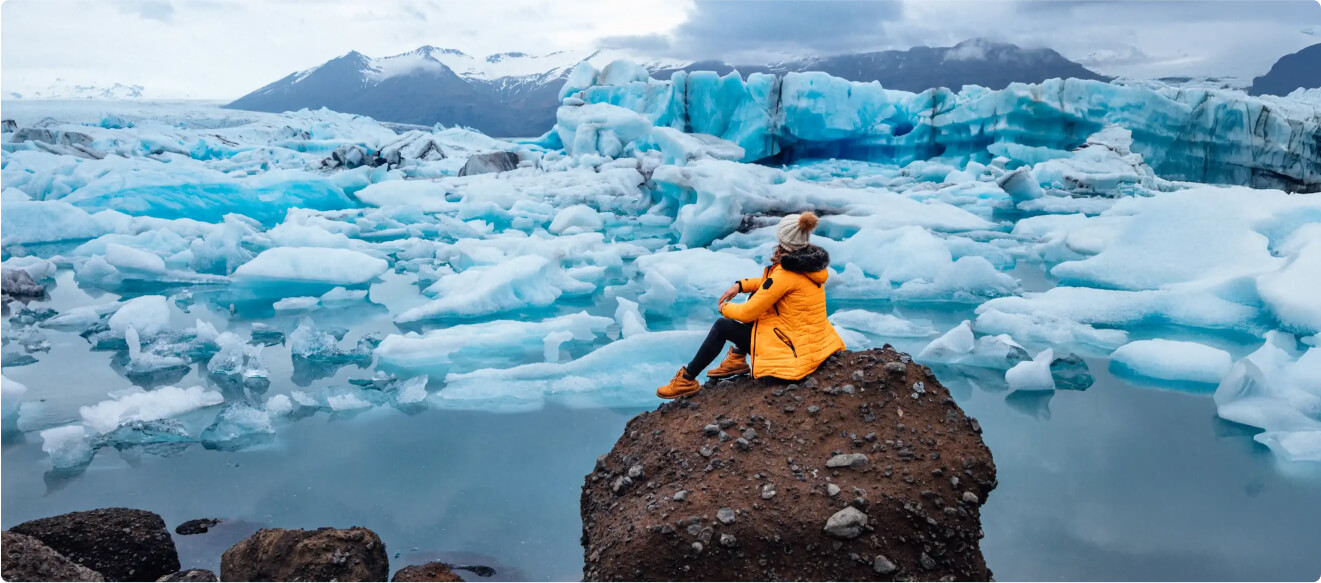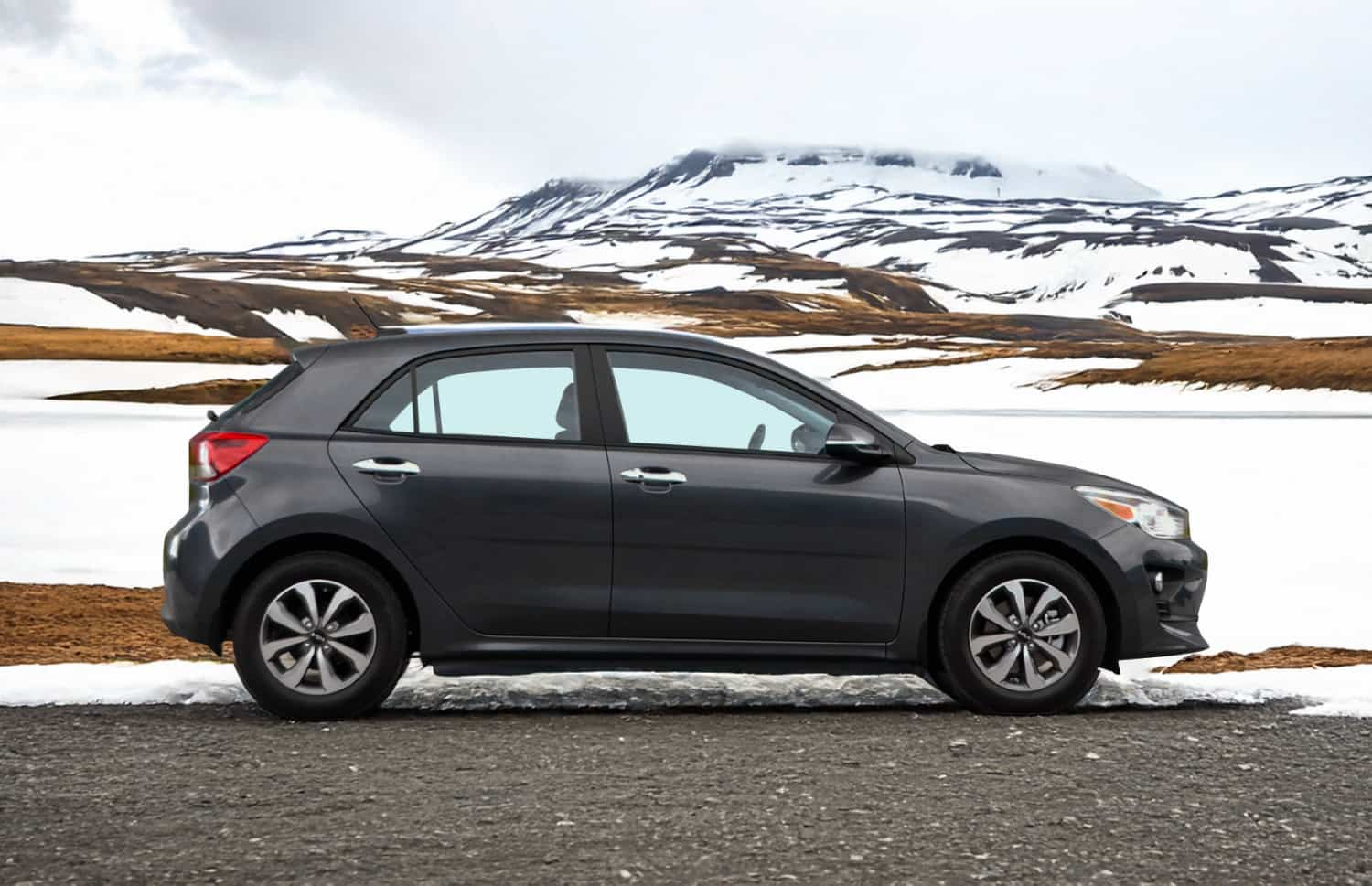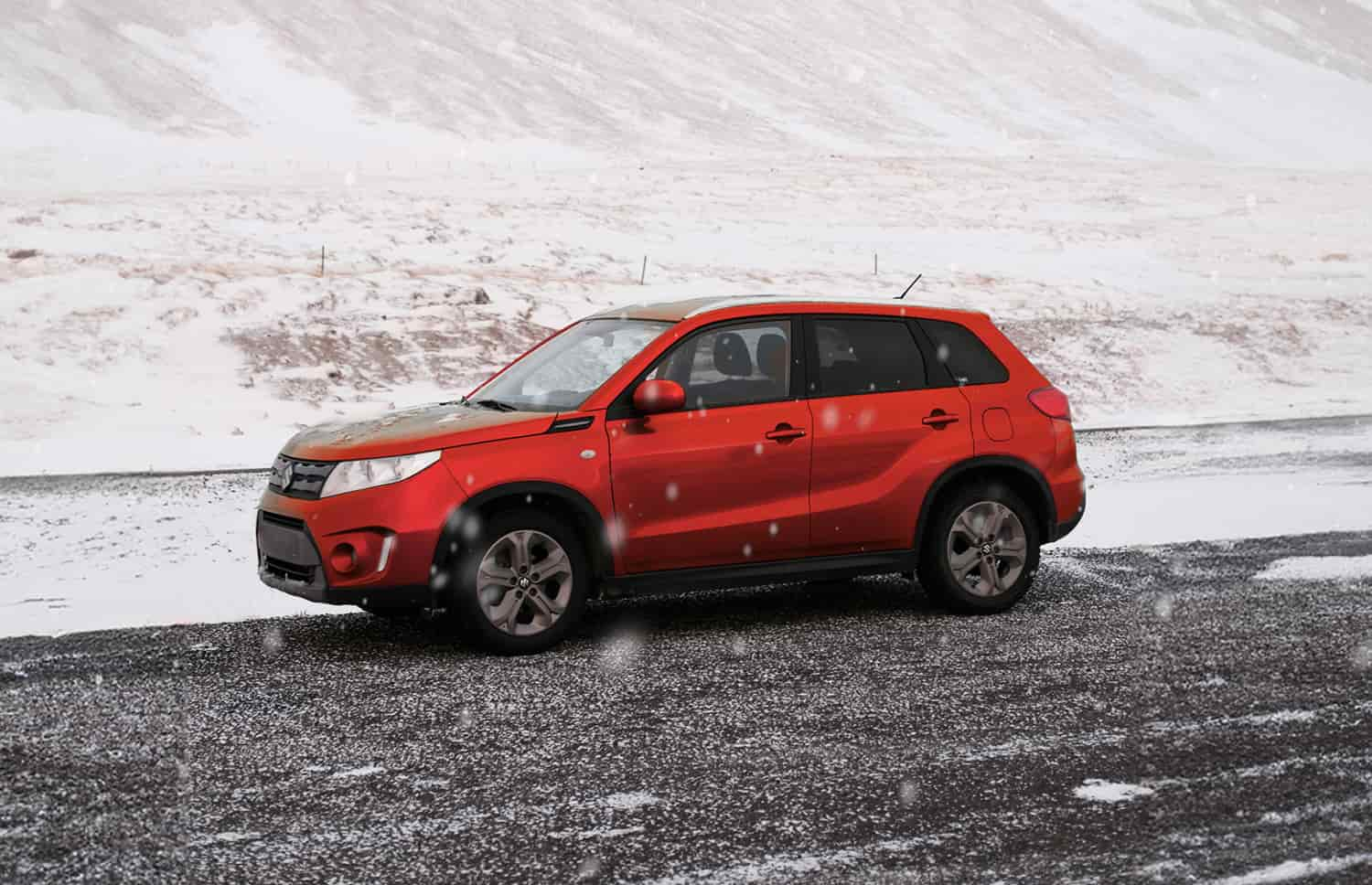The first time you hit an Icelandic winter road, you might think, 'This isn't so bad.' Then, a sudden gust of wind shoves your car sideways, ice turns your tires into skis, and you realize you have no clue what you're doing.
If you think driving in Iceland in winter is just about going slow and hoping for the best, you're sadly mistaken. The roads here throw surprises that can ruin your trip fast. Are you ready for whiteouts, black ice, and roads that vanish under snow?
Keep reading, and you'll know exactly what to expect. We'll also give you some essential tips for navigating Iceland's winter roads so your trip can be as safe and enjoyable as possible.
Pros & Cons of Driving in Iceland in the Winter
Driving in Iceland in the winter isn't just about getting from A to B. It's an experience that can be sometimes breathtaking while other times nerve-wracking. If you're prepared, it can be the trip of a lifetime. If you're not, well… let's just say it may not end well. Here's what you need to know.
Pros
- Go where you want, when you want – You have the freedom to explore Iceland at your own pace and on your own schedule. You also get to adjust your plans based on what the weather is doing.
- Iceland looks unreal in winter – Snow-covered waterfalls, frozen landscapes, and barely any crowds.
- Your car is your warm retreat – After freezing your face off at a viewpoint, blasting the heater feels like heaven.
- Rentals cost less – Summer car prices sting. Winter rates? Much easier on your wallet.
- Fewer tourists – Have you ever tried getting a photo at Kirkjufell Mountain in the summer? Good luck. Winter means fewer people and more space.
- Better shot at the Northern Lights – Travel to Iceland in winter, and you have a higher chance of seeing the Northern Lights. What more can you ask for?
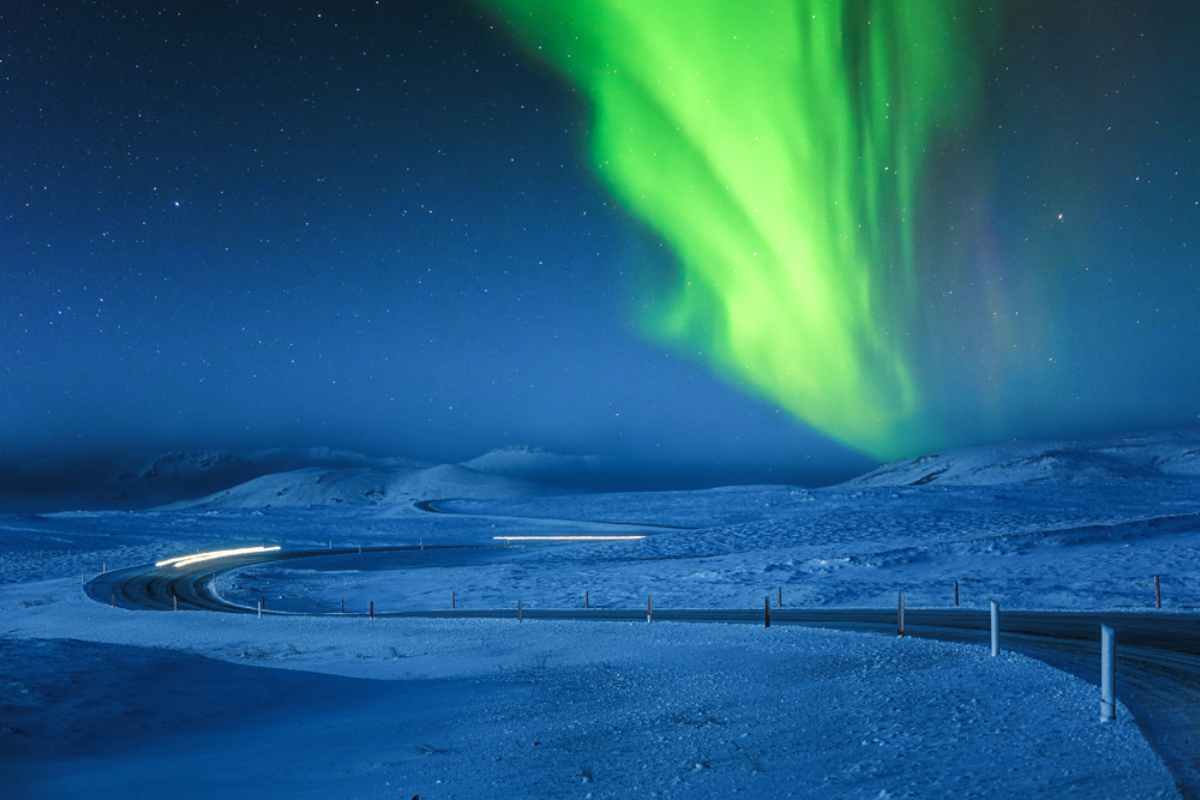
Cons
- Winter roads aren't a joke – Snow, ice, and wind are strong enough to rattle your car. If you're not used to it, it's rough.
- Daylight disappears fast – In mid-winter, you get about four to five hours of daylight. Plan wrong, and you'll be driving in the dark.
- Weather changes fast – It can go from clear skies to a full-blown snowstorm in minutes. Stay flexible.
- Icy roads make mistakes costly – Spinning out, getting stuck, or sliding into a ditch can ruin your trip fast. Know how to drive in these conditions.
- Road closures are common – Highland routes and certain scenic roads shut down completely for winter.
- More planning required – You need the right car, the right tires, and constant weather and road checks. No winging it.
- Expect last-minute plan changes – Road closures and storms can shut down routes. Be ready to adjust.
Understanding Iceland's Winter Road Conditions
Winter in Iceland means constantly changing road conditions. Here's what you might face:
- Snow & Ice – Roads can be covered in anything from light snow to deep, hard-packed ice. Driving requires caution, especially on curves and hills.
- Black Ice – This nearly invisible layer of ice forms when temperatures hover around 0°C (32°F). It's most common on bridges, shaded roads, and wet surfaces. If you hit it, your car can lose control in an instant.
- Whiteouts – Strong winds blow snow across the road, making visibility near zero. If you can't see the road, pull over and wait it out.
- Blizzards – Heavy snow, brutal winds, and zero visibility. If one is in the forecast, stay put until conditions improve.
Importance of Real-Time Weather Updates
Most folks only check the weather once during a trip to Iceland and assume they're good to go. Big mistake. Iceland's winter roads don't play fair, and here's why keeping an eye on real-time updates actually matters:
- Your car rental insurance won't cover bad decisions – Many policies don't cover storm-related damage. If you ignore warnings and wreck your car, that bill is yours.
- Gas stations aren't everywhere – Getting stranded in bad weather burns fuel fast. If a storm's coming, you'll want to fill up before options run out.
- Rescues take time – Iceland's emergency services are top-notch, but they're not teleporting to you. Getting stuck in an avoidable storm means waiting in your car for help to arrive, which can take hours.
- Some remote towns shut down in bad weather – If roads close, accommodations, restaurants, and even gas stations might too. You don't want to roll into an empty town with no place to stay.
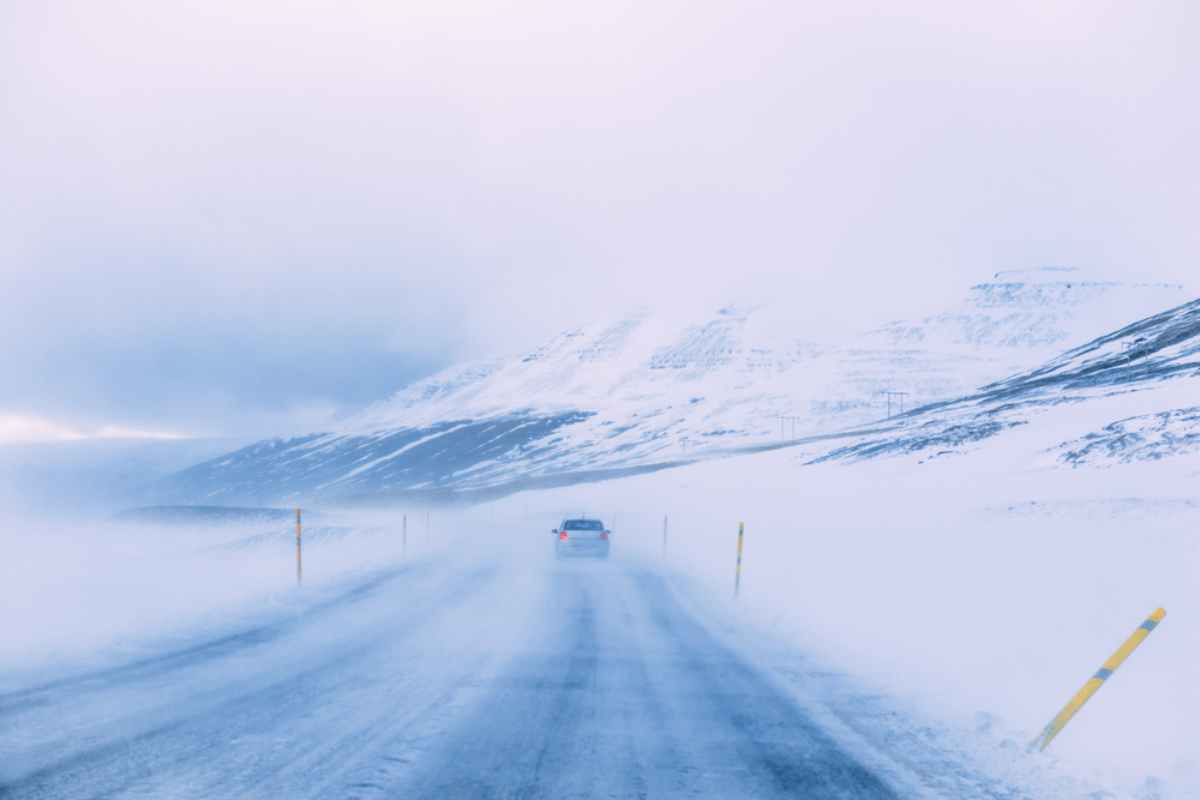
Preparing Your Rental for Icelandic Winter
If you rent the wrong car, your trip to Iceland in winter could go from amazing to awful fast. A compact two-wheel drive might be fine in Reykjavík, but once you hit the South Coast or Northern Iceland, you'll need to rent an off-roading 4x4 vehicle built for the conditions.
Recommended Vehicle Types for Snowy Roads
- Dacia Duster – A small, budget-friendly SUV that punches above its weight. It has solid ground clearance, great gas mileage, and enough power to handle icy roads without burning through your fuel budget. Ideal for travelers looking for reliability without overspending.
- Suzuki Jimny – Don't let its size fool you. This compact 4x4 is a beast on hills and deep snow, thanks to its lightweight frame and strong traction. It's not the roomiest choice, but if you're traveling light and need a tough, no-nonsense ride, it's a solid pick.
- Toyota RAV4 – One of the most spacious and well-balanced 4x4s for Iceland's winter roads. It delivers great stability, smooth handling on ice, and a roomy interior for long drives. Perfect if you want comfort without sacrificing performance.
- Suzuki Vitara – A step up in price but also in reliability. The Vitara handles well in harsh weather, has excellent fuel efficiency, and offers a smooth drive on both paved and gravel roads. If you want a dependable, all-around winter vehicle, this is a great choice.
- Jeep Renegade – If you want a mix of off-road capability and comfort, the Renegade delivers. It has a strong AWD system, good clearance, and features like hill descent control to help with tricky winter roads. A great pick for those planning to explore beyond the standard tourist routes.
You can view all of our 4x4 models here. If you’re still unsure about which vehicle to rent for winter in Iceland, don’t worry—we’ve got you covered! Our team knows Iceland’s roads inside and out and can help you choose the perfect rental car for Iceland based on your route, travel plans, and the latest weather conditions.
Just drop us a line, and we’ll make sure you hit the road with the right set of wheels for a safe and unforgettable winter adventure!
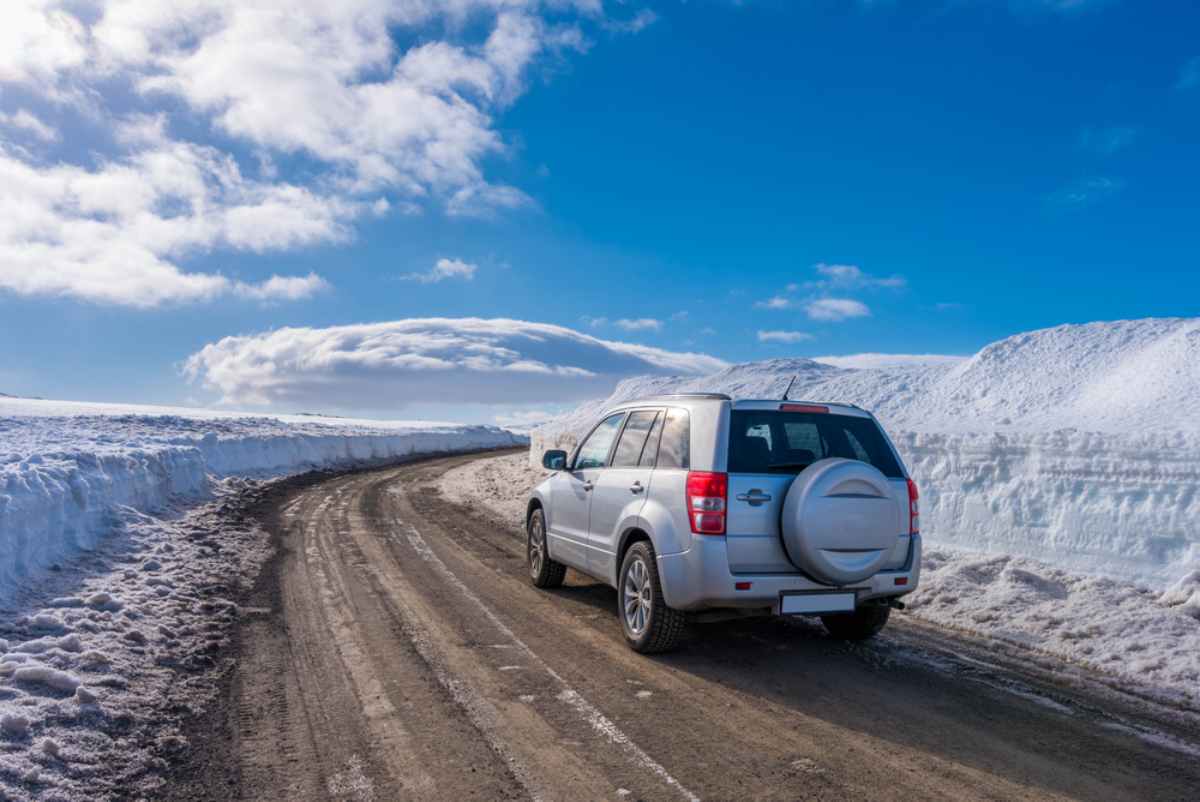
Essential Winter Car Equipment
Having the right car is only half the battle. If your rental isn't properly equipped, you're asking for trouble. Before hitting the road, make sure you have these essentials for driving in Iceland in winter.
- Winter Tires – Regular tires won't cut it on Iceland's winter roads. Studded or snow tires provide extra grip on ice and snow, making a massive difference in safety. Cars Iceland equips all rentals with winter tires between November 1st and April 15th.
- Ice Scraper – Waking up to a frozen windshield is a daily reality. Without an ice scraper, you will waste time trying to clear your windows and mirrors with your hands. Make sure your car has one.
- Snow Shovel – If you get stuck in deep snow, a shovel is your best friend. With it, you can dig yourself out and save time waiting for help.
Emergency Kit – If you get stuck, you'll want:
- Blankets – If you are stuck in freezing temperatures, staying warm is a priority.
- Non-perishable food and water – A long wait for help is easier if you have supplies.
- Flashlight with extra batteries – Visibility can drop fast in winter, and having a light source helps.
- First aid kit – Minor injuries are easier to handle with basic medical supplies.
- Traction Aids: Carry sand, cat litter, or traction mats to assist if your vehicle gets stuck on ice.
- Portable Jump Starter: Useful in case of battery issues in remote areas.
Navigation Tools
- GPS – Cell service is unreliable in remote areas. A GPS will help you navigate safely, even when your phone has no signal.
- Off-line maps – Download maps of your route beforehand, just in case. If you get lost, you'll be grateful to have them.
Extra Features That Matter
- Heated seats and mirrors – Stepping into a warm car on a freezing morning is a game-changer. Heated mirrors also prevent fogging, giving you a clear view.
- Anti-lock Braking System (ABS) – Helps prevent skidding when braking on ice. Most modern cars have ABS, but confirm your rental is equipped with it.
- Warning triangles – If you break down or pull over in bad weather, other drivers need to see you. This is a basic safety feature that all rental cars should have.
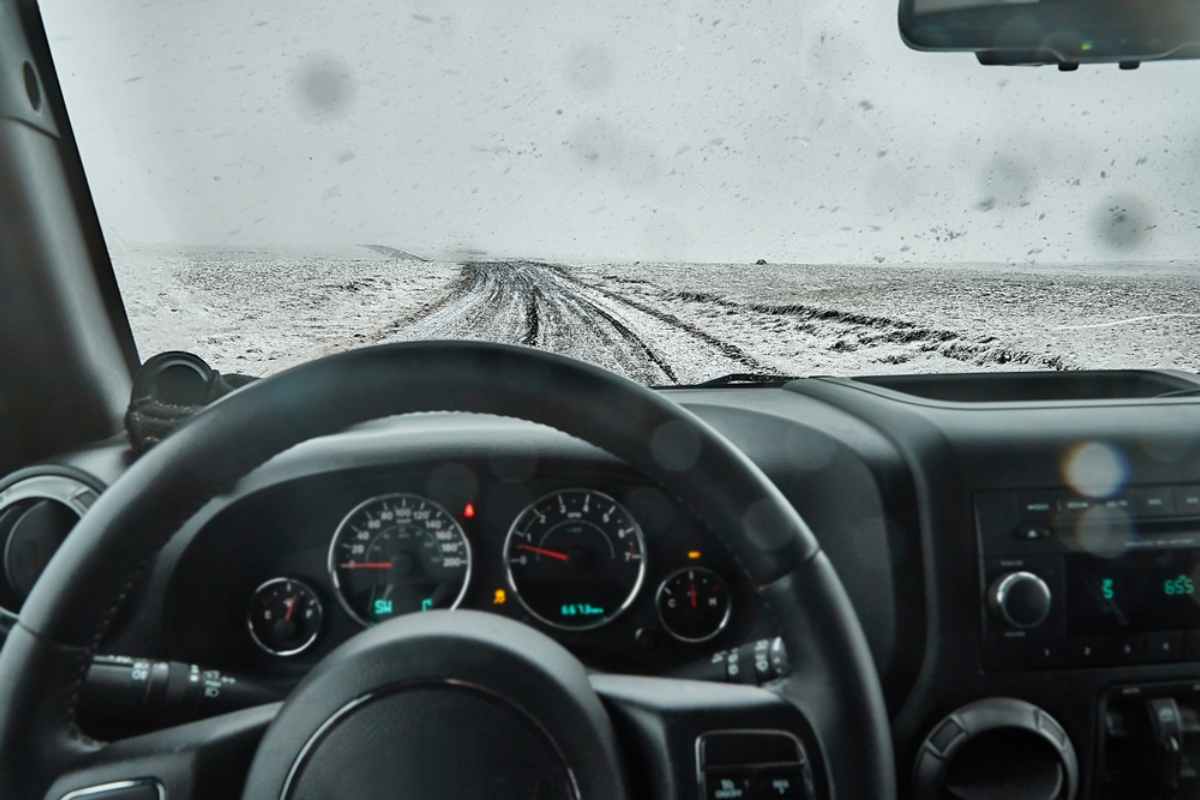
Safe Driving Techniques in Snow
If driving in Iceland is starting to put you off, don't worry. With the right techniques, you will feel confident and prepared to handle icy roads.
General Tips for Driving in Snowy Conditions
- Accelerate and brake slowly – Sudden movements make you lose traction. Ease into acceleration and brake early to avoid sliding.
- Increase following distance – It takes much longer to stop on snow. Leave at least double the normal space between you and the car ahead.
- Steer gently – Jerking the wheel can send your car into a skid. Make smooth, controlled turns.
- Avoid sudden lane changes – Packed snow and ice patches can throw off your balance. Change lanes gradually when necessary.
- Use lower gears on hills – This prevents wheel spin and helps you stay in control.
- If you start skidding, don't panic – Take your foot off the gas and steer in the direction you want to go. Avoid slamming the brakes.
Handling Different Drivetrains in Snow
Understanding your vehicle's drivetrain is crucial for navigating Iceland's winter roads safely. Each type of drivetrain behaves differently on snow and ice, so knowing what to expect will improve your confidence and control while driving.
Front-Wheel Drive (FWD)
FWD vehicles are the best option among two-wheel-drive cars when it comes to snow. The engine sits over the driving wheels, meaning better traction when accelerating and climbing hills. But that doesn't mean you're in the clear.
Pros
- Less likely to fishtail or lose control while turning.
- Handles light snow and icy roads better than RWD.
- Decent fuel efficiency compared to AWD or 4WD.
Cons
- Can struggle on steep inclines or deep snow.
- Harder to recover from skids compared to AWD or 4WD.
How to Drive FWD in Snow:
- If your front wheels spin, ease off the gas and let them regain grip.
- Avoid sudden acceleration or braking to prevent sliding.
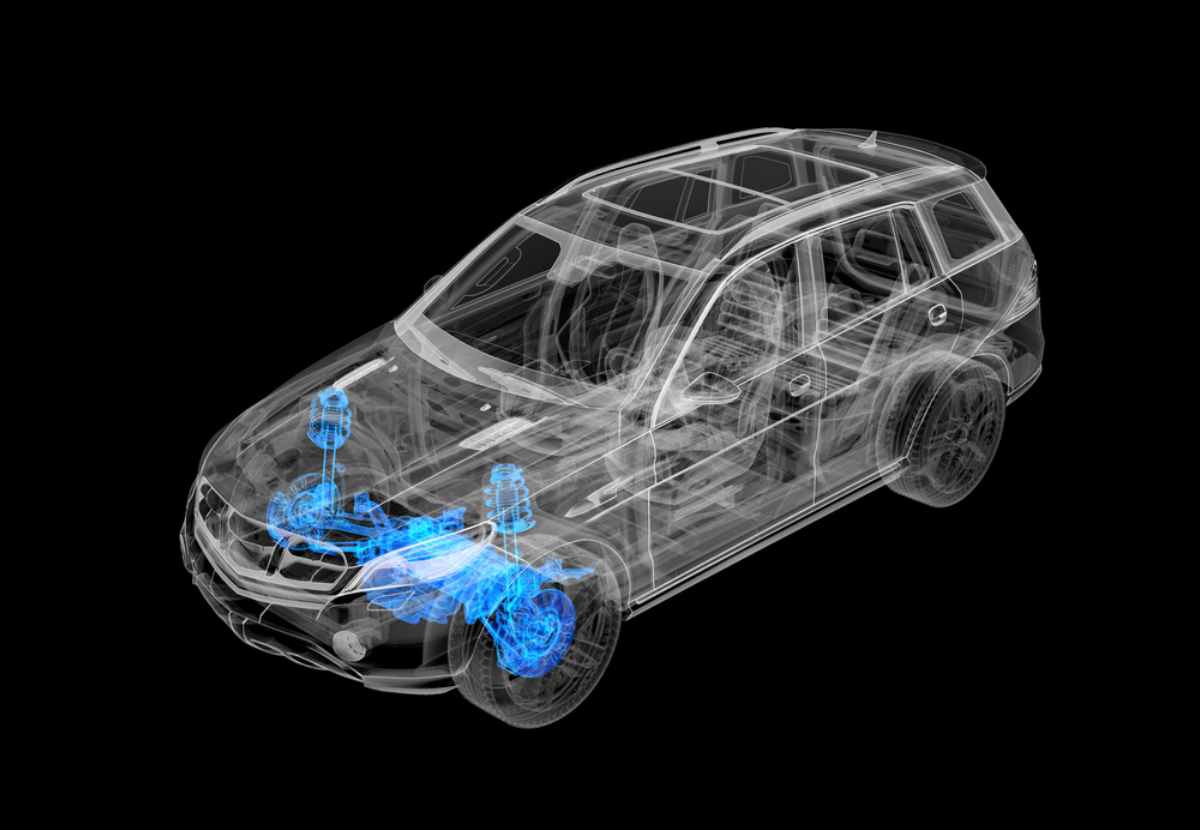
Rear-Wheel drive (RWD)
RWD is the worst drivetrain for winter driving because the power is sent to the rear wheels, which have little weight over them. This makes RWD cars more likely to lose control, fishtail, or spin out. Sports cars and trucks with RWD are especially risky on icy roads.
Pros
- Can handle well in dry conditions.
- Better weight distribution for performance vehicles.
Cons
- Prone to fishtailing when accelerating.
- Struggles on slippery roads, hills, and deep snow.
How to Drive RWD in Snow:
- If you get stuck, try rocking the car gently between Reverse and Drive to regain momentum.
- Carry extra weight in the trunk (sandbags or heavy gear) to improve traction.
All-Wheel Drive (AWD) & 4-Wheel Drive (4WD)
Both AWD and 4WD give superior traction in snowy and slippery conditions by sending power to multiple wheels. However, they are not the same thing.
- AWD automatically shifts power between wheels that have the most grip. It works great for roads that alternate between ice, slush, and snow.
- 4WD distributes power equally to all four wheels, making it better for deep snow, rough terrain, and unplowed roads.
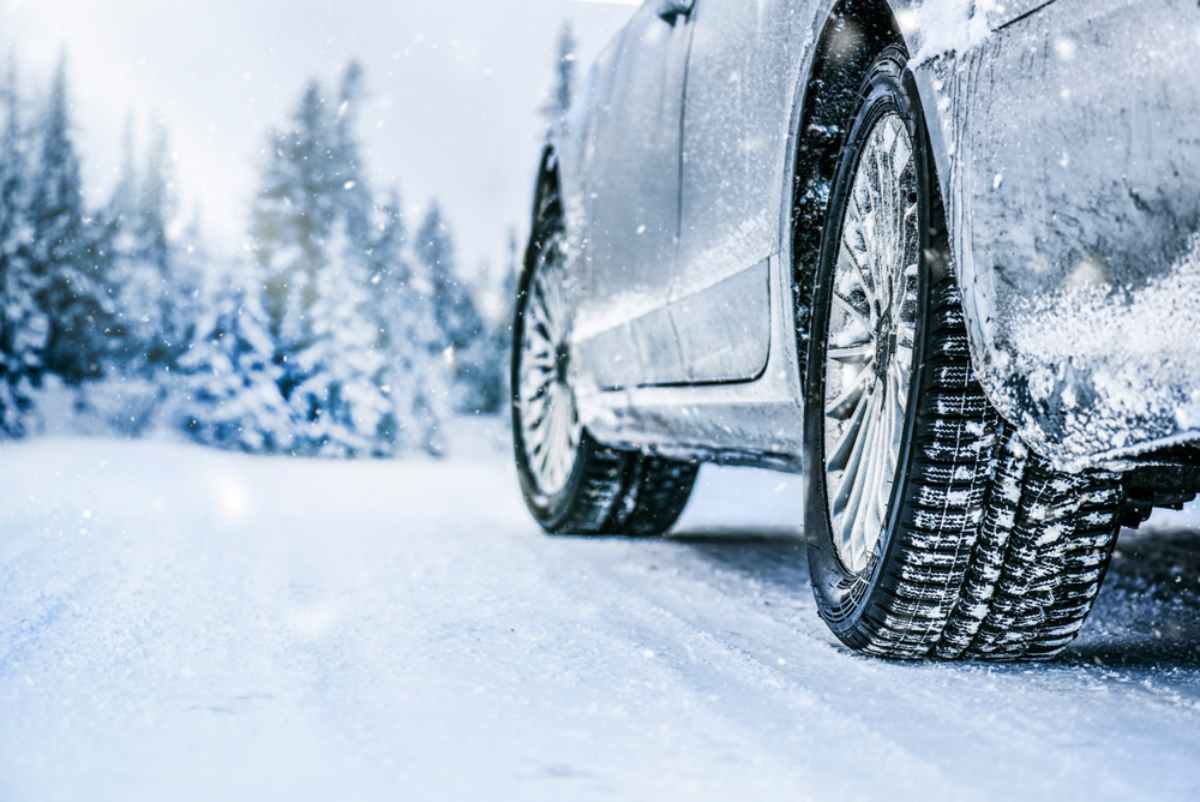
Essential Tips for Winter Driving With a Car in Iceland
Apart from understanding your vehicle and employing cautious driving techniques, here are some Iceland winter driving tips to help you stay safe on the roads:
- Plan your route before leaving – Know which roads will be open and check the latest weather updates. If a route is risky, consider an alternative.
- Drive during daylight hours – Visibility is poor in winter, so stick to driving when it's bright out.
- Get comfortable with driving in Iceland – Take some time to get used to your car and the road conditions before setting off on a long journey.
- Pay attention to warning signs – Signs warning of icy roads, strong winds, or avalanches are there for a reason. Follow them carefully.
- Watch out for snowplows – They have limited visibility and may spray up ice chunks, so keep a generous following distance.
- Know how to handle wind gusts – High winds can quickly push your vehicle around. Grip the steering wheel firmly if you feel yourself being blown sideways.
- Headlights: Remind drivers that headlights must be on at all times, regardless of visibility conditions.
Navigating Iceland's Unique Road Signs
A car rental in Iceland comes with a responsibility to understand the country's unique road signs. Unlike other countries, many Icelandic road signs are unique to what you are used to back home. Here are some examples you may encounter:
- Icy Road Sign – A red and yellow triangle with a snowflake. This means ice ahead. Slow down unless you want to test your rental's airbags.
- Gravel Road Sign – Paved roads can turn to gravel with no warning. If you see this sign, ease off the gas or risk losing control.
- Road Closed Sign – This isn't a suggestion. If you ignore it, you might end up stuck in deep snow with no way out. Turn around.
- Single-Lane Bridge Sign – One-lane bridges are everywhere. Yield to the car closest to the bridge, and don't assume you have the right of way.
- Falling Rocks Sign – Found in mountainous areas. If you see it, don't park nearby unless you want a rock through your windshield.
- Strong Winds Sign – Iceland's wind is no joke. Hold onto the wheel or risk getting pushed into the next lane.
- Livestock on Roads: Warn about the possibility of encountering animals, especially in rural areas.
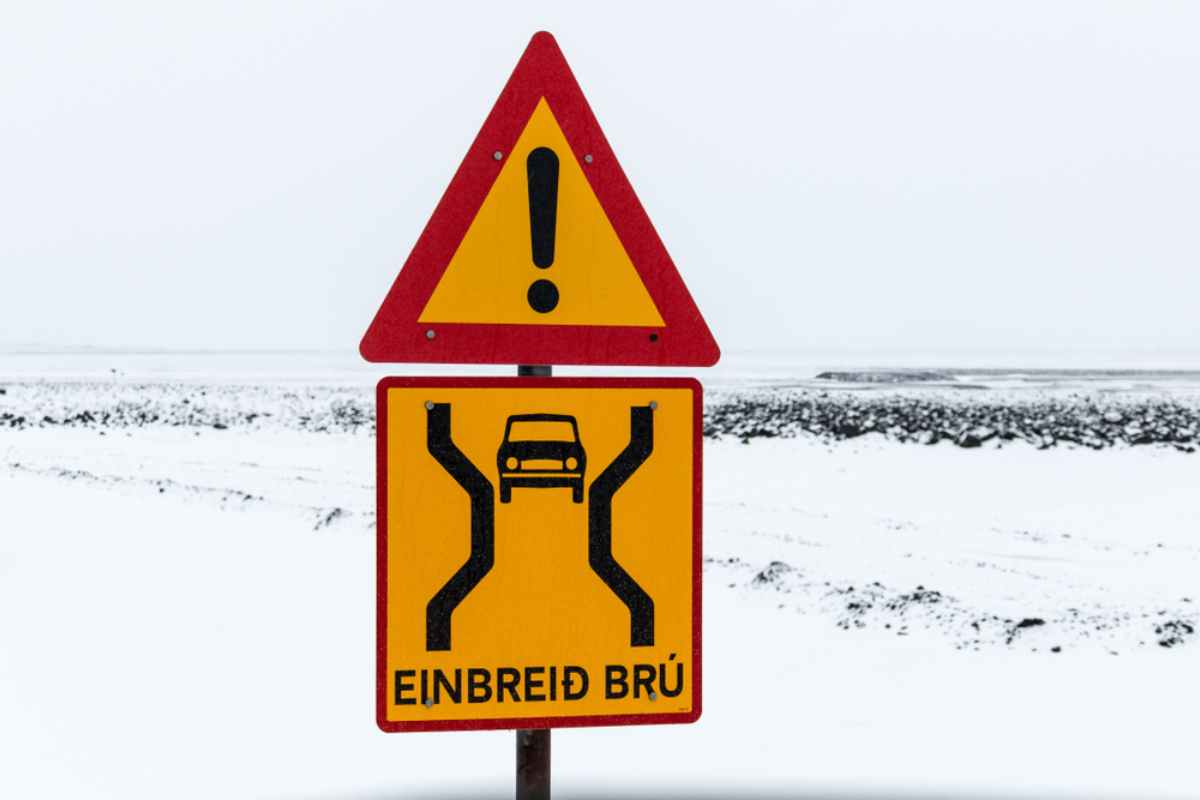
Understanding and Using 'Snow Mode' in Vehicle
If you're renting a 4x4 in Iceland during the winter months, chances are it has a Snow Mode button. No, it's not a gimmick. It's there to keep you from sliding off the road like an amateur.
Here is how Snow Mode tweaks your car's settings to handle icy roads better:
- Traction control adjusts automatically to prevent wheel spin.
- Throttle response slows down so you don't accidentally send yourself into a skid.
- Power gets distributed smartly to give you the best possible grip on snow-covered roads.
Activate Snow Mode only when you're driving on ice or snow. If the roads are clear, turn it off to avoid damaging your vehicle's systems. Remember, even with Snow Mode activated, it's crucial to drive cautiously and adjust your speed accordingly. This mode is not a license to drive recklessly.
The Role of Studded Tires in Enhancing Safety
Think regular winter tires are enough for Iceland's winter conditions? Not a chance. If your tires can't grip the ice, you're not going anywhere. Studded tires are the only way to stay in control on slick, frozen roads.
- Studded tires are mandatory from November 1st to April 15th. No exceptions. If your car doesn't have them, you shouldn't be driving.
- They grip ice like nothing else. Regular winter tires help, but studded ones dig into slick roads, keeping you from sliding into a ditch.
- Most car rentals include them for free during winter, so if a company tries to charge extra, walk away.
- Don't push your luck after April 15th. Using studded tires past the deadline can cost you up to 20,000 ISK in fines.
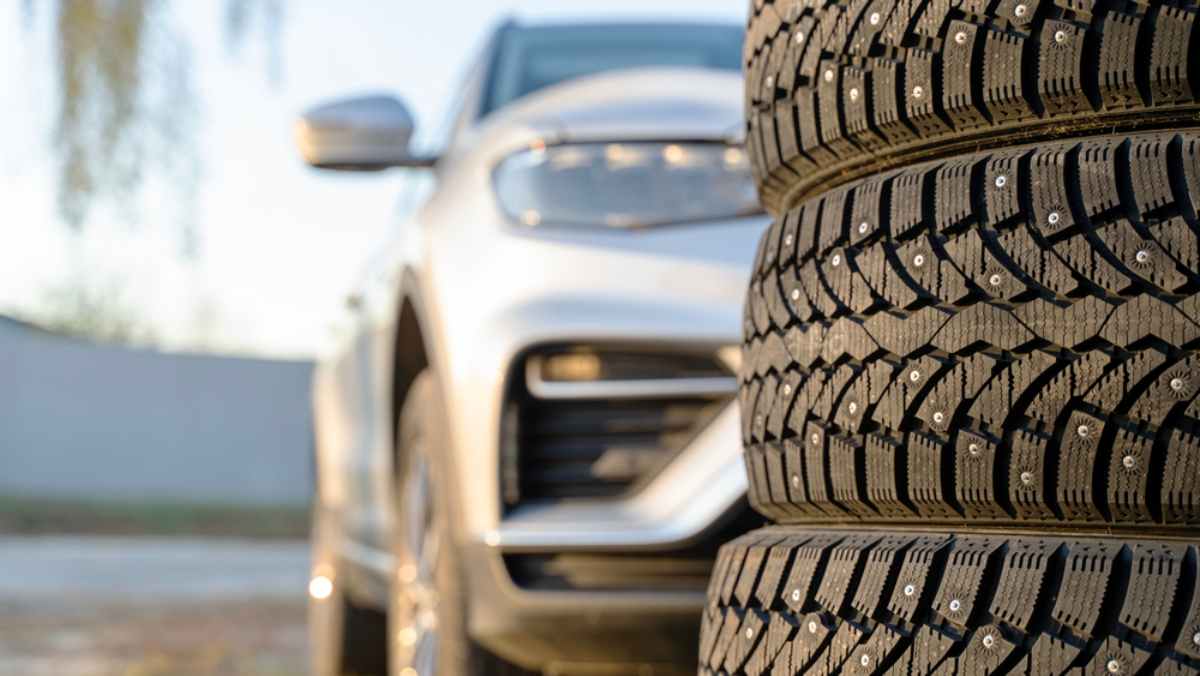
Additional Resources for Travelers
If you're driving around Iceland in winter, you need more than just a tank of gas and good intentions. Stay ahead of the game with these essential resources.
- SafeTravel Iceland – Your go-to for real-time driving conditions, weather warnings, and safety updates. Check it before you drive, or risk learning the hard way.
- Icelandic Road and Coastal Administration (Umferdin) – Live webcams, detailed maps, and road status updates. Want to know if your route is still open? Look here first.
- Icelandic Association for Search and Rescue (ICE-SAR) – If things go south, these are the people who pull stranded travelers out of trouble. Check their site for emergency prep tips (you'll be glad you did.)
- Vedur.is – Iceland's official weather site. If you don't check the forecast and weather conditions, don't be surprised when a sudden storm shuts down your plans.
- 112 Iceland App - In case of an emergency, use this app to quickly alert search and rescue teams with your GPS location. This is a must-have for any traveler in Iceland's unpredictable winter weather.
- Iceland Police (Lögreglan): For emergencies, dial 112. For non-urgent assistance, visit the nearest police station or check their website for local contact details.
Safe Winter Routes for Beginners
If you're new to winter driving in Iceland, then don't just pick a random road and hope for the best. Stick to these beginner-friendly routes for a safer and more enjoyable experience:
- The Golden Circle – This classic loop takes you to Thingvellir National Park, Geysir, and Gullfoss Waterfall. The roads are well-maintained and regularly cleared. If you are unsure about winter driving, this is the best place to start.
- South Coast to Vík – Want to see Seljalandsfoss, Skógafoss, and Iceland's famous black sand beaches? All of these stops are on Route 1 (Ring Road), which stays plowed and safe all year.
- Snaefellsnes Peninsula – If you want variety without the risk, this area gives you a mix of volcanic peaks, lava fields, fjords, and coastal cliffs. Roads are manageable, but always make sure to check conditions.

FAQs About Driving in Iceland in Winter
Is it hard to drive in Iceland in the winter?
Yes, if you are not prepared. Snow, ice, and strong winds make driving tricky. With the right car, winter tires, and caution, it is manageable.
Is it safe to drive in Iceland in winter?
It is safe if you check road conditions, drive carefully, and use a proper vehicle. Unexpected weather and icy roads can be dangerous for unprepared drivers.
Do you need 4WD in Iceland in winter?
If you plan to explore beyond Reykjavík or the Golden Circle, yes. A 4WD or AWD vehicle provides better traction and stability on snow-covered and remote roads.
How are the roads in Iceland in December?
Main roads are maintained but often icy or snow-covered. Remote roads may be closed.
Driving in Iceland in Winter Doesn't Have to Be Scary
Most travelers either panic about driving in Iceland in winter or assume they can handle it without preparation. Both are mistakes. Iceland's roads aren't impossible, but they do demand respect. With the right car, winter tires, and a little common sense, you can explore safely and confidently.
If you're ready to hit the road, rent a car in Iceland that's built for winter. Cars Iceland has you covered with reliable, snow-ready vehicles. Need advice? Our friendly team is here to help. Simply drop us an email at info@carsiceland.com or give us a direct call at (+354) 773 70 70. We hope to hear from you soon. Happy travels!




